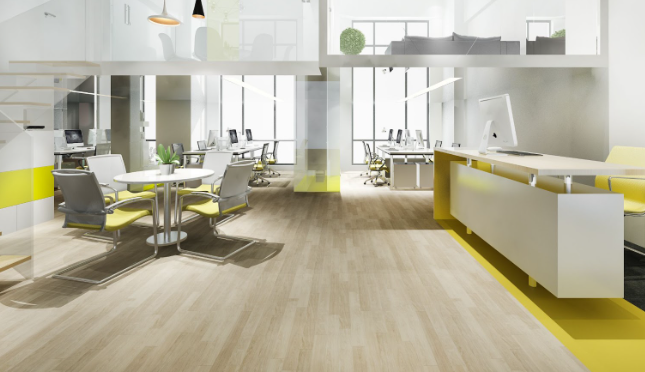Modernizing Tradition: Innovative Designs and Patterns for Wood Parquet

Wood parquet, an age-old flooring tradition, has seen a resurgence in modern interior design. This revival isn’t merely a nod to the past; it’s a celebration of the innovative designs and patterns that are redefining the traditional concept of parquet flooring. With advancements in technology and a contemporary approach to design, wood parquet has evolved into a versatile and stylish flooring option that seamlessly combines tradition with modernity. Let’s explore the innovative designs and patterns that are modernizing wood parquet flooring.
Embracing Timeless Elegance
Wood parquet has long been associated with timeless elegance and sophistication. Its unique appeal lies in the intricate patterns and the natural beauty of wood grains. Whether it’s the classic herringbone, chevron, or basket weave patterns, these timeless designs have stood the test of time and continue to exude an aura of refinement in modern interior spaces.
Contemporary Twists on Classic Patterns
While traditional patterns continue to captivate, modern designers have added their twists to these classics. Variations in scale, color contrasts, and altered angles in laying out the parquet planks have breathed new life into these timeless patterns, creating a fresh and contemporary look.
Geometric and Abstract Designs
Innovative designs in wood parquet have introduced geometric shapes and abstract arrangements. These designs play with lines, angles, and shapes, offering a more avant-garde approach to traditional parquet flooring. Hexagons, triangles, and other geometric forms bring a sense of modernity and creativity to spaces.
Mixed Material Combinations
The integration of wood parquet with other materials like stone, metal, or glass has become a trend in modern design. Combining these materials results in striking and unconventional designs that offer a unique visual impact, adding depth and character to flooring arrangements.
Color Variations and Finishes
Advancements in wood treatment and finishing techniques have led to a spectrum of color options and textures. From light, natural tones to darker, richer hues, the availability of diverse color variations in luxury furniture showrooms allows for a customized flooring solution that suits various interior aesthetics. Matte, glossy, distressed, or textured finishes further enhance the versatility of wood parquet, catering to different design preferences.
Laying Techniques for Visual Impact
Innovative laying techniques contribute significantly to the visual impact of wood parquet flooring. Mixing different patterns within the same space, combining various species of wood, or creating patterns that flow seamlessly from one room to another can transform the entire ambiance of a space.
Environmental Longevity
With a growing emphasis on sustainability, there’s an increased demand for eco-friendly wood parquet options. Manufacturers are adopting sustainable practices, using responsibly sourced wood or recycled materials, and minimizing waste, offering environmentally conscious consumers a choice that aligns with their values.
Technology and Personalization
Advancements in technology have enabled precise cutting and shaping of wood, allowing for intricate designs and customization. Computer-aided design and manufacturing processes have increased the possibilities for personalized and one-of-a-kind patterns that meet the specific needs and preferences of individual homeowners and designers.
Adaptability in Various Spaces
Wood parquet’s adaptability to diverse spaces is one of its most significant advantages. From residential homes to commercial establishments, the warmth and sophistication of wood parquet can enhance the ambiance of any setting. Its use isn’t limited to floors alone; it can be incorporated into walls and ceilings to create a cohesive and striking design theme.
Maintenance and Longevity
Wood parquet flooring, when properly maintained, offers durability and longevity. Regular cleaning and appropriate care ensure that these floors retain their beauty and quality over time, making them a worthwhile investment for any space.
Installation Techniques and Considerations
The installation process of wood parquet is as crucial as the design itself. Different installation techniques can significantly impact the final look and durability of the flooring. Understanding these methods and considerations is fundamental to achieving the desired aesthetic and functional outcome.
Glue-Down Installation
This method involves adhering individual parquet pieces directly to the subfloor using adhesive. It provides stability and minimizes movement, creating a solid feel underfoot. This installation technique is ideal for high-traffic areas and ensures the longevity of the flooring.
Floating Installation
Floating installation involves laying the parquet over an underlayment without direct adhesion to the subfloor. Interlocking planks or pieces are used in this method, allowing for easier installation and potential reusability if the need arises. It’s a versatile approach suitable for various subfloor types.
Nail-Down Installation
In this method, parquet pieces are attached to the subfloor using nails or staples. It’s a traditional and sturdy installation technique, suitable for solid wood parquet. This method offers structural stability and is often preferred in areas where glue-down or floating installations may not be appropriate.
Subfloor Preparation
Proper subfloor preparation is imperative for a successful wood parquet installation. Ensuring the subfloor is clean, level, and free from moisture or any irregularities is essential for a smooth and durable installation.
Acclimatization and Moisture Control
Wood is susceptible to changes in moisture content, which can lead to expansion or contraction of the material. Acclimatizing the wood to the environment of the installation space is crucial to prevent issues post-installation. Controlling moisture levels in the subfloor and the ambient room conditions is vital to maintain the integrity of the wood.
Pattern and Layout Planning
Careful planning of the layout and pattern is essential for a visually pleasing result. Choosing the right pattern, direction, and alignment of the parquet pieces can significantly impact the overall aesthetic of the space.
Expansion Gaps and Trims
Wood, as a natural material, expands and contracts with changes in temperature and humidity. Providing expansion gaps around the perimeter of the installation area and using suitable transition trims between rooms or different flooring types is crucial to accommodate these natural movements.
Finishing and Maintenance Guidelines
Once the wood parquet is installed, applying appropriate finishes such as oil or varnish is necessary to protect the surface and enhance its durability. Additionally, following manufacturer-recommended maintenance practices will help preserve the beauty and quality of the flooring for years to come.
Final Thoughts
Wood parquet, with its fusion of traditional charm and contemporary creativity, stands as a testament to the versatility and timelessness of good design. The innovative patterns and designs available in wood parquet offer homeowners and designers the opportunity to create spaces that speak of both heritage and modernity, making a statement that echoes the sophistication and elegance of this age-old flooring tradition in today’s design landscape.



